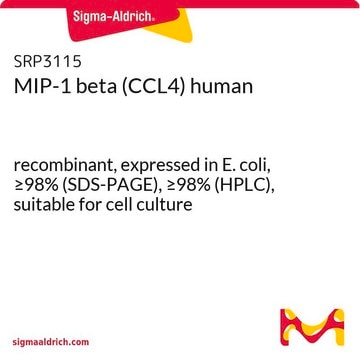319961
Tétrachlorure de carbone
reagent grade, 99.9%
Synonyme(s) :
Tétrachlorométhane
About This Item
Produits recommandés
Qualité
reagent grade
Niveau de qualité
Densité de vapeur
5.32 (vs air)
Pression de vapeur
143 mmHg ( 30 °C)
91 mmHg ( 20 °C)
Pureté
99.9%
Forme
liquid
Indice de réfraction
n20/D 1.460 (lit.)
Point d'ébullition
76-77 °C (lit.)
Pf
−23 °C (lit.)
Densité
1.594 g/mL at 25 °C (lit.)
Chaîne SMILES
ClC(Cl)(Cl)Cl
InChI
1S/CCl4/c2-1(3,4)5
Clé InChI
VZGDMQKNWNREIO-UHFFFAOYSA-N
Vous recherchez des produits similaires ? Visite Guide de comparaison des produits
Catégories apparentées
Description générale
Application
- A precursor to synthesize high-surface-area mesoporous carbon material by a self-templating method in the presence of sodium-potassium alloy (NaK) as a reducing agent.
- A reactant to synthesize 1,2-disubstituted cyclopentanes via Cu-catalyzed ring-closing Kharasch addition reaction with 1,6-dienes.
- A solvent as well as a reactant to prepare diphenyl carbonate from phenol and carbon dioxide in the presence of ZnCl2 as a catalyst.
Mention d'avertissement
Danger
Mentions de danger
Conseils de prudence
Classification des risques
Acute Tox. 3 Dermal - Acute Tox. 3 Inhalation - Acute Tox. 3 Oral - Aquatic Chronic 3 - Carc. 2 - Ozone 1 - Skin Sens. 1B - STOT RE 1 Inhalation
Organes cibles
Liver,Kidney
Code de la classe de stockage
6.1B - Non-combustible acute toxic Cat. 1 and 2 / very toxic hazardous materials
Classe de danger pour l'eau (WGK)
WGK 3
Point d'éclair (°F)
Not applicable
Point d'éclair (°C)
Not applicable
Certificats d'analyse (COA)
Recherchez un Certificats d'analyse (COA) en saisissant le numéro de lot du produit. Les numéros de lot figurent sur l'étiquette du produit après les mots "Lot" ou "Batch".
Déjà en possession de ce produit ?
Retrouvez la documentation relative aux produits que vous avez récemment achetés dans la Bibliothèque de documents.
Notre équipe de scientifiques dispose d'une expérience dans tous les secteurs de la recherche, notamment en sciences de la vie, science des matériaux, synthèse chimique, chromatographie, analyse et dans de nombreux autres domaines..
Contacter notre Service technique








